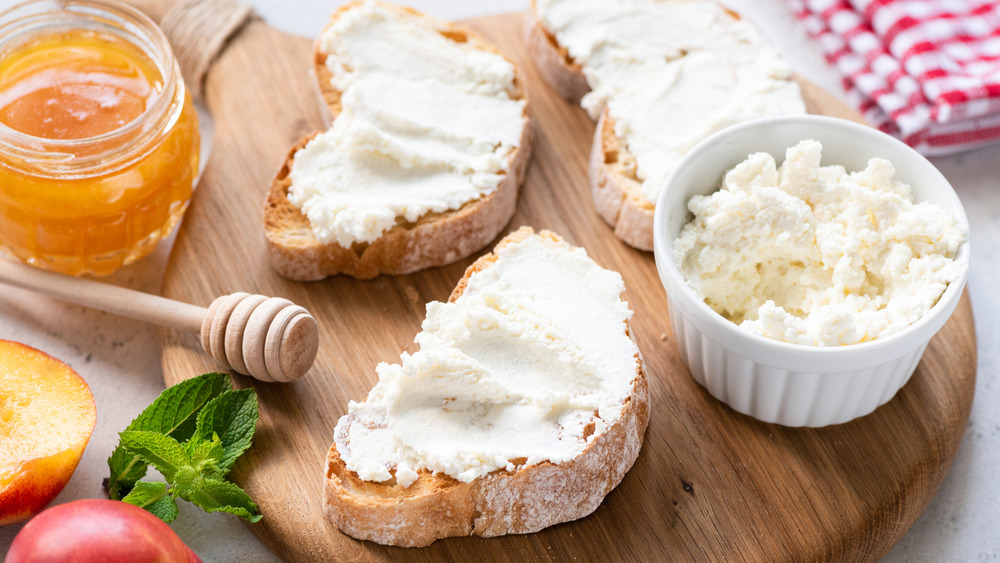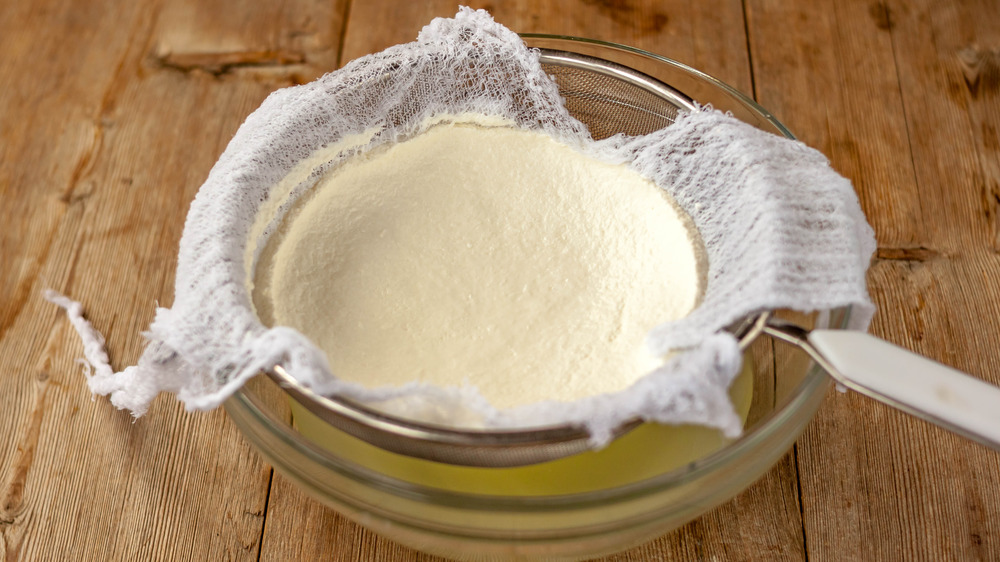What You Didn't Know About Ricotta Cheese
Ricotta is a pretty amazing cheese to cheese lovers. It can be used in baked pasta dishes, to make the gnocchi itself, in fritters, on bruschetta, or even to make desserts like cheesecake or an orange and honey blossom cake (via Delicious). But the versatile fresh cheese isn't all that it appears to be.
In Roman times, ricotta was made from sheep's milk, which had a few uses. Sheep's milk was a beverage, used in sacrificial rites, and to make pecorino cheese. Even then, the Romans didn't discard the whey, which is a dairy by-product created during the cheesemaking process. What they found is that the whey would become more acidic if it was allowed to ferment for a day or two in slightly warm temperatures. Using the more acidic whey, they could make ricotta, which is finer and smoother than cottage cheese, but has a sweet flavor (via DeLallo).
Ricotta cheese is made from whey, not curds
Today, most of the ricotta cheese you can buy at the grocery store is made from cow's milk. But, what really sets ricotta apart from most other cheeses is that it is made with acidic whey instead of cheese curds. When cheese is made, the milk separates into solids, which are the curds that are pressed into cheese, and a liquid — the whey. Ricotta, which actually translates to "recooked" in Italian, comes from doing just that — recooking the whey to make cheese from the tiny curds left behind in the whey (via Bon Appetit).
Since ricotta is made from the leftover whey, it actually isn't even considered to be a cheese. Instead, it's referred to as a latticino, which means that it is a dairy by-product. Cow and buffalo milk mozzarellas happen to be latticinos, too, according to DeLallo. So, the next time you enjoy the sweet, and creamy white cheese, you can appreciate its history and the unusual way that it is made.

